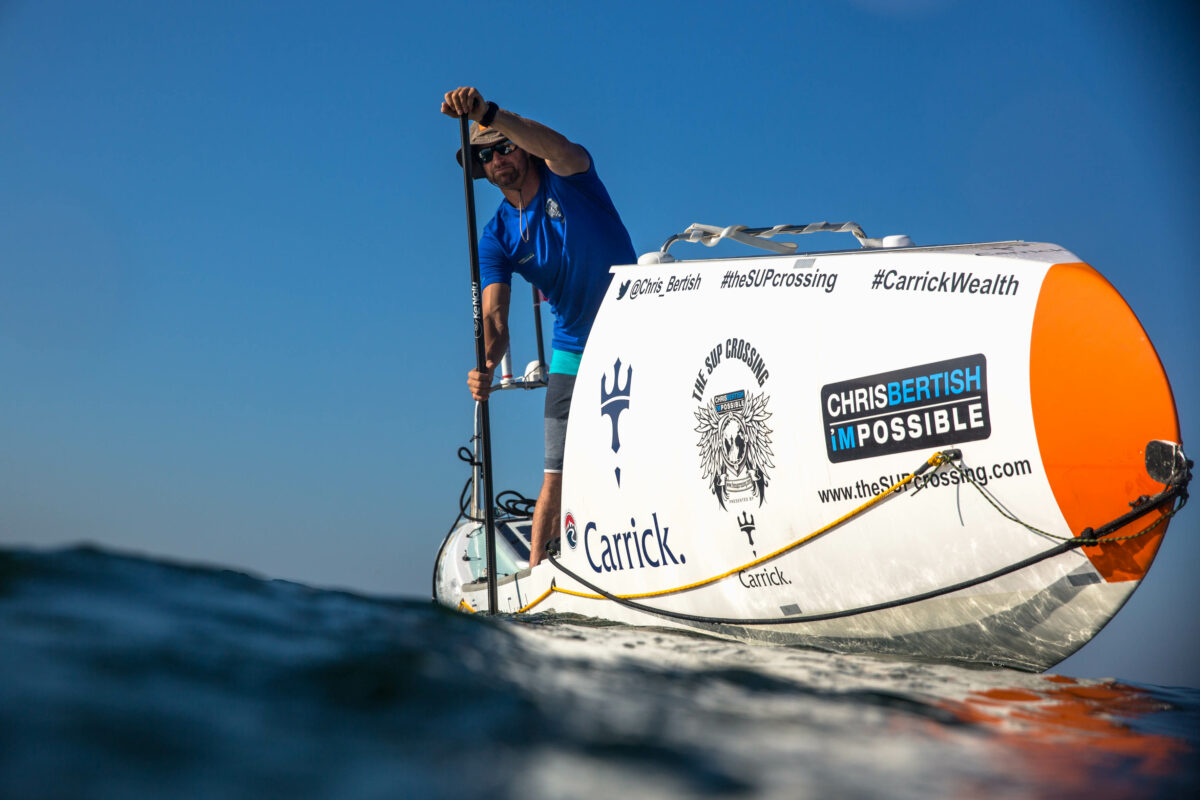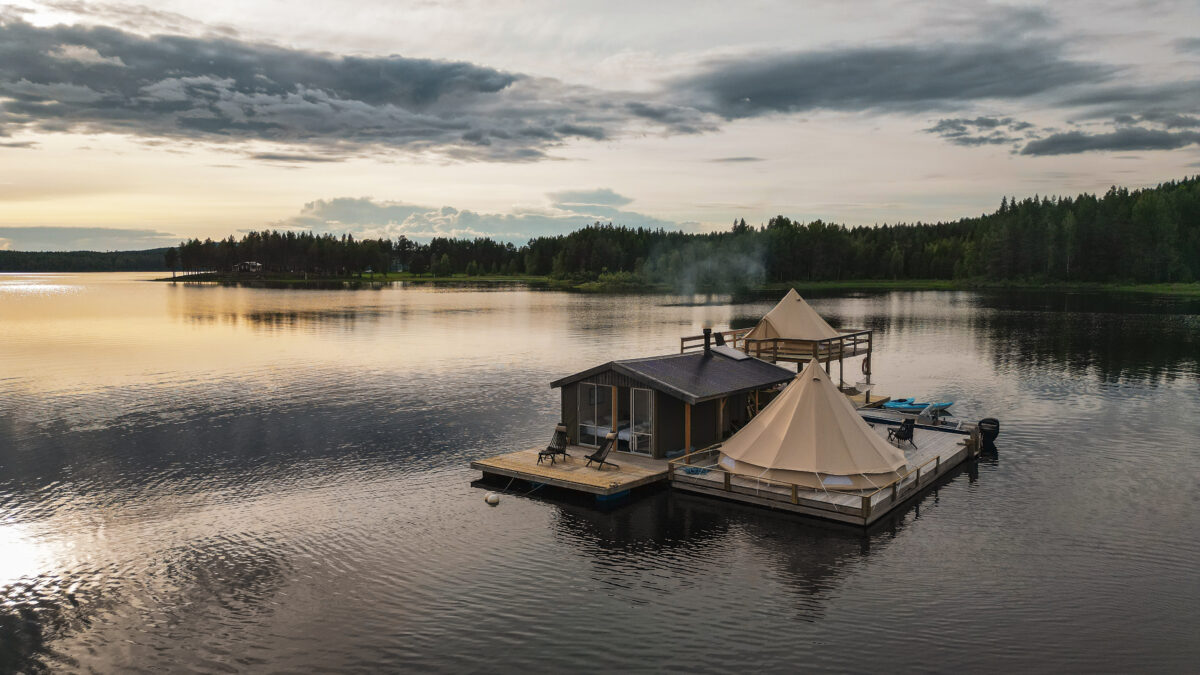The evocative title of Chris Bertish’s books says a lot. When I read the title “All In!: The Atlantic Standup Paddle Crossing – 93 Days Alone at Sea,” I got an inkling of what I was in for. There would be weather, loneliness, waves, problems, and probably sharks. And, since Bertish obviously survived to write the book, inspiration. I was right! But it’s still worth reading the book for the stories and motivational tidbits.
The journey Bertish chronicles in “All In!” took place from December 2016 to March 2017, when he paddled more than 4,000 miles alone from Morocco to Antigua. He became the first person to ever stand-up paddleboard across an ocean. But Bertish was no stranger to firsts and awards. He was already a big wave surfing champ with multiple world records. When he’s not in the water, Bertish is addressing giant companies like Google, Coke, and Salesforce as a motivational speaker.

While Bertish clearly has superhuman strength and a need to embrace challenges most of us would pay everything to avoid, he’s also driven by philanthropy. His grueling 93-day paddle raised over half a million dollars for Operation Smile. This global nonprofit provides free cleft palate surgery for children. Bertish also raised money to support ocean conservation initiatives.
Of course, the first question a reader probably has is, “How does a person cross an ocean on a SUP?” I can barely paddle my inflatable SUP across a small lake on a slightly windy day. But Bertish’s 20-foot craft, the Impifish, was named for Zulu warriors called Impis. This extra-long SUP had a tiny cabin that Bertish could curl up in to escape the elements. The SUP was tricked out with a ton of high-tech communication gear, including GPS, VHF radio, Echomax, an emergency position indicating radio beacon, and a satellite phone, to name just a few. Gearheads will love this book for the tech alone.

While the book is full of exciting tales, it’s also a bit repetitive — just like 93 days of paddling would be. There’s a pattern of disaster followed by motivational insight, and repeat. Storm! Ah, survived. Great white shark! Ah, survived it. Crucial equipment malfunction! Survived again. You can see why all the big companies want Bertish to speak to them. The man doesn’t give up or take no for an answer.
As he says at one point early in the book, “People will make up every possible excuse not to do something, or give you a whole laundry list of the reasons why they ‘can’t.’ You can always find plenty of reasons if you look for them, but instead you should be finding reasons why you ‘can.’ Focus on that and then find a way to accomplish it. If you believe you can’t you won’t, but if you believe you can, and you want it badly enough, you will always find a way. It’s that simple, period.”
The thing that irked me most about the book was an unsolved mystery. Before Bertish set out on the Impifish, some unidentified entity tried to prevent his SUP journey. Somebody sabotaged his car, messed with arrangements for his gear and food, and, most horribly of all, killed his cat. This still makes me sick to contemplate, especially since the mystery angle of the story was dropped. The reader never finds out who did these horrible things or why.
The paperback version of “All In” debuted in July. In line with Bertish’s conservation ideals, the book is printed on Forest Steward Certified paper. He also released a super limited edition eco series of only 13 copies. These 100% sustainable books are printed on 40% post-consumer recycled paper with soy and water-based inks. The binding features eco-cotton thread and non-toxic water-based glues. The book’s cover is, fittingly, made using recycled ocean plastics.

Writer received a free copy of the book for review.











